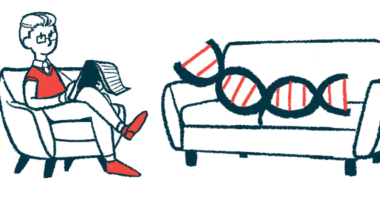Roctavian, first gene therapy for hemophilia A, approved for adults in US
Eligible patients must not have pre-existing antibodies to the therapy's viral vector AAV5

The U.S. Food and Drug Administration (FDA) has approved the one-time gene therapy Roctavian (valoctocogene roxaparvovec-rvox) for eligible adults with severe hemophilia A.
Roctavian now becomes the first gene therapy to win FDA approval for the treatment of hemophilia A in the U.S.
“Today’s approval of Roctavian builds on BioMarin’s proven track record of advancing treatments that target the underlying cause of life-threatening genetic conditions, which has produced eight best- or first-in-class commercial therapies,” Jean-Jacques Bienaimé, chairman and CEO of BioMarin Pharmaceutical, the therapy’s developer, said in a press release.
“We are proud to now offer adults with severe hemophilia A, a one-time, single-dose treatment option. We are especially grateful to the bleeding disorders community for its support of this program, and to all the patients and healthcare providers who participated in our clinical trials,” he added.
“Today’s approval represents an important advance in providing treatment options for patients with this bleeding disorder, and treatment with gene therapy may reduce the need for ongoing routine therapy,” Peter Marks, MD, PhD, director of the FDA’s Center for Biologics Evaluation and Research, said in another press release.
The decision comes about 3.5 years after BioMarin filed a regulatory application and about three years after the FDA granted it priority review.
In 2020, the FDA asked for two years of follow-up data from the Phase 3 GENEr8-1 clinical trial (NCT03370913), whose six-month findings supported the first filing. After BioMarin resubmitted its application in 2022, the agency requested the inclusion of three-year findings from the ongoing trial.
The submission led the FDA to delay by three months its review deadline — initially set for the end of March — to have time to analyze the results.
Conditional approval in the EU
The therapy was granted conditional approval last year for adults in Europe with severe hemophilia A who don’t have detectable antibodies against AAV5, or inhibitors to standard replacement therapies. Roctavian’s full approval, however, is pending additional data confirming its clinical benefit in this indication.
As specified in its FDA label, Roctavian should be administered via a single into-the-vein infusion with the help of an infusion pump under the supervision of a physician experienced in the treatment of hemophilia and/or other bleeding disorders. The therapy’s recommended dose is 6×1013 vector genomes per kilogram of body weight.
Before receiving Roctavian, patients must complete a series of screening tests to assess the presence of pre-existing antibodies against AAV5, as well as neutralizing antibodies against factor VIII (FVIII) — the blood-clotting protein that’s missing or defective in hemophilia A. Roctavian should not be administered to patients who have a positive result in any of these screening tests.
AAV5 DetectCDx, an FDA-approved diagnostic test developed by ARUP Laboratories, was shown to be effective at identifying patients with anti-AAV5 antibodies that may render the gene therapy less effective or ineffective. This specific test is intended to be used as a companion diagnostic test to Roctavian, helping healthcare professionals identify and select the patients who may benefit from receiving the gene therapy.
Before starting treatment, patients also must complete a series of tests aiming to evaluate liver health, including liver function tests, ultrasound, and other laboratory assessments of liver fibrosis (scarring). If abnormalities in liver function or imaging tests are detected, patients are advised to consult a liver specialist to help determine their eligibility to receive treatment with Roctavian.
The therapy also should not be given to patients with active acute or uncontrolled chronic infections, known significant liver fibrosis, or cirrhosis.
Roctavian’s label includes a series of warnings and precautions, including infusion-related reactions, liver toxicity, blood-clotting events, and a theoretical risk of hepatocellular carcinoma, the most common type of liver cancer.
2,500 estimated to be eligible in the US
BioMarin anticipates that about 2,500 of the 6,500 adults estimated to be living with severe hemophilia A in the U.S. will be eligible to receive Roctavian.
To ensure that all eligible patients have access to Roctavian, BioMarin said it is working closely with private and public payers in the U.S. Additionally, the company is offering an outcomes-based warranty, committing to reimburse government and commercial payers by up to 100% in case a patient fails to respond to Roctavian. If a patient stops responding to treatment any time in the first four years following dosing, the company will reimburse payers on a prorated basis for the cost of treatment.
BioMarin also is working closely with the leading hemophilia treatment centers in the U.S. to make sure all the institutions are prepared to administer the therapy to eligible patients.
“Our teams have been working for many months to ensure that the people who are eligible for Roctavian have access to this first-in-class medicine,” said Jeff Ajer, executive vice president and chief commercial officer of BioMarin. “We appreciate the close partnership with health insurers, hemophilia treatment centers and the hemophilia community to ensure the greatest access for people with severe hemophilia A.”
Roctavian uses a harmless and modified adeno-associated virus, called AAV5, to deliver liver cells a shorter, but working, copy of the gene that encodes FVIII. As the liver is the body’s main producer of blood-clotting factors, the therapy is expected to restore FVIII levels, thereby reducing bleeds and potentially eliminating the need for routine FVIII replacement therapy.
Roctavian’s approval was supported by data from GENEr8-1, the largest and longest Phase 3 clinical trial of any gene therapy in hemophilia.
Roctavian in clinical trials
GENEr8-1 tested Roctavian in 134 men with severe hemophilia A who were on standard preventive replacement therapy to prevent bleeds. Of these, 112 had data on annual bleeding rates prospectively collected during a period of at least six months while they were on standard preventive therapy prior to receiving Roctavian. All patients in GENEr8-1 were followed for at least three years.
Top-line results from the study showed the therapy significantly reduced bleeding rates and the need for replacement therapy over at least one year after dosing. At two years, 84% of patients were bleed-free and 95% remained off preventive therapies.
Three-year data showed that most participants didn’t have clinically relevant bleeds, with 92% not requiring prophylactic treatment. Also, FVIII activity remained high, at a median of 8.4% of normal, and at a mean of 18.8% of normal. More recent three-year data from the trial also demonstrated that study participants experienced a reduction of more than 80% in overall treated bleeds, with Roctavian reducing FVIII usage by more than 95%.
As reported in the FDA label, efficacy analyses focused on the 112 patients whose bleeding rates had been evaluated for at least six months before receiving Roctavian. It showed that annual bleeding rates dropped by 52% — from a mean of 5.4 to 2.6 bleeds per year — after a median follow-up period of three years.
Substantial reductions in the rates of spontaneous and joint bleeds also were observed in these patients. Spontaneous bleed rates dropped from a mean of 2.3 to 0.5 bleeds per year, while joint bleed rates fell from a mean of 3.1 to 0.6 bleeds per year.
According to BioMarin, most trial participants continued to respond to Roctavian through year three and beyond, without having to resort to additional preventive treatment. The company is planning to continue monitoring the long-term effects of treatment in trial participants for up to 15 years in a long-term extension study, as well as for 15 years or more in patients treated with Roctavian in a real-world setting in post-approval studies.
Side effects
Safety data from GENEr8-1 also indicated that Roctavian was generally well tolerated, with the most commonly reported side effects including mild changes in liver function, nausea, fatigue, headache, infusion-related reactions, vomiting, and abdominal pain. No cases of blood-clotting events or cancer related to Roctavian have been reported in clinical studies.
“The approval of Roctavian, as the first gene therapy for severe hemophilia A, has the potential to transform the way we treat adults based on years of bleed control following a single, one-time infusion,” said Steven Pipe, MD, professor of pediatrics and pathology at the University of Michigan and an investigator in GENEr8-1.
Roctavian also is being tested alongside anti-inflammatory corticosteroids in men with severe hemophilia A as part of an open-label Phase 3b trial, called GENEr8-3 (NCT04323098).
Two Phase 1/2 trials also are evaluating the therapy in men with severe hemophilia who have antibodies against Roctavian’s viral carrier (NCT03520712) or current or prior inhibitors against FVIII (NCT04684940).







